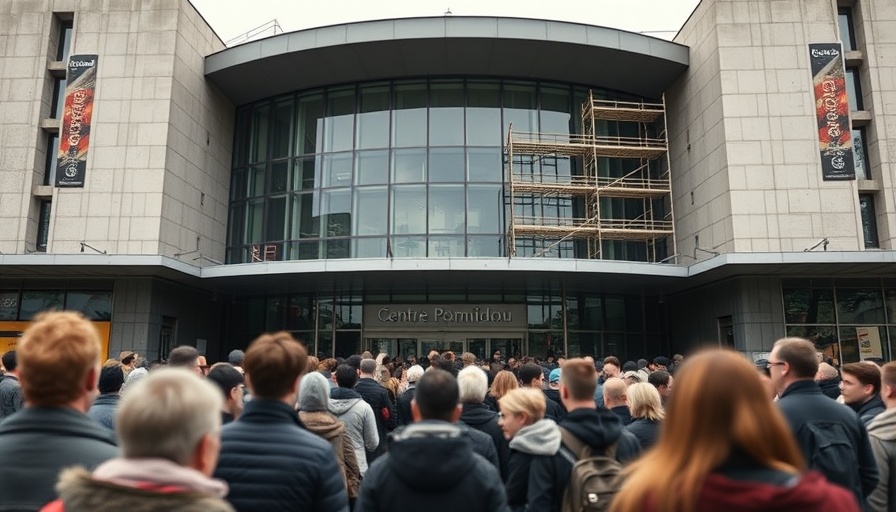
Parisians Bid Farewell to the Centre Pompidou: A Cultural Milestone
The Centre Pompidou, synonymous with modern art in Paris and one of the globe's most renowned museums, closed its doors this past Monday, leaving residents and art lovers with mixed emotions. With the museum set to undergo a major renovation starting in 2025, the closing marks a significant chapter in the cultural landscape of the city. For many Parisians, the Pompidou isn't just a museum; it embodies the spirit of creativity and collaboration that defines Parisian life.
Sweeping Changes Ahead: What the Closure Means
As reported, the lengthy renovation is expected to take five years and cost over €262 million, focusing on essential updates like asbestos removal and improving accessibility. This decision has spurred conversations among staff members and artists alike about the future of their work during this hiatus. The conversation is echoed in regional and national news sources reflecting the apprehensions of the museum staff regarding job security and the integrity of the Pompidou’s mission.
Value of Local Culture: Why It Matters
Local engagement with cultural institutions like the Centre Pompidou illustrates a broader connection between art, community, and individual identity. The cultural significance of this museum stretches beyond its walls, representing a meeting point for ideas and interactions that shape community bonds. As Parisians reminisce about the experiences hosted within the Pompidou, from art exhibitions to educational workshops, they acknowledge how essential these shared spaces are in fostering a vibrant community.
Reflections from the Community: Art in Their Lives
In attending the farewell event, citizens expressed their gratitude through stories of personal connections to the museum. Remembering first dates in its cafe, cherished moments of overwhelmed awe while discovering a new artist, and reputation as a space that inspires dialogue—these tales weave a rich tapestry of emotional investment that emphasizes the museum's role within the communal psyche of Paris.
Future Prospects: What Survives the Closure?
With the Pompidou shuttering for half a decade, many wonder how the art scene will cope. Some argue that it could yield a vibrant cultural shift as temporary galleries and exhibits pop up in response to the void left behind. The introduction of digital exhibitions or pop-up art installations may surface, reflecting resilience and adaptability within the Parisian art community.
Keeping the Spirit Alive: Community Initiatives
As the Pompidou plans to collaborate with other museums during its renovation, initiatives such as partnerships will help keep contemporary art accessible. This collaborative spirit speaks volumes about community support for the arts and reflects an essential part of the French culture—collective action and solidarity.
As we look to the future, engaging with our local arts and cultures will become even more vital. It's an essential time to come together to support local artists and institutions that may require our backing during this transitional period. While the Pompidou may close, the heartbeat of the Parisian art scene continues, signifying that the loss is not in vain but a step toward rejuvenation.
As top wage earners in Philadelphia and beyond, we must recognize the importance of support for cultural institutions like our own ones. It’s time to foster connections, whether through donations, visits, or community involvement. Every little bit helps to sustain the spirit of creativity that enriches our lives.
 Add Row
Add Row  Add
Add 




Write A Comment